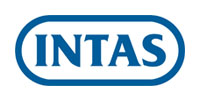NOTICE: unsafe with : Alcohol
USED FOR:
Type 2 diabetes
COMPOSITION:
Glimepiride (1mg)
Therapeutic Uses:
anti diabetic

CAUTION
Alcohol intake may increase or decrease the blood sugar lowering action in an unpredictable way.

WEIGH RISKS VS BENEFITS
Gleam 1mg Tablet may be unsafe to use during pregnancy.Animal studies have shown adverse effects on the foetus, however, there are limited human studies. The benefits from use in pregnant women may be acceptable despite the risk. Please consult your doctor.

Gleam 1mg Tablet is probably safe to use during lactation. Limited human data suggests that the drug does not represent a significant risk to the baby.Monitoring of the breastfed infant's blood glucose is advisable during maternal therapy with Gleam 1mg Tablet

Your ability to drive may be affected if your blood sugar is low or high. If this happens, do not drive.

CAUTION
Gleam 1mg Tablet should be used with caution in patients with kidney disease. Dose adjustment of Gleam 1mg Tablet may be needed. Please consult your doctor.Use of Gleam 1mg Tablet is not recommended in patients with severe kidney disease. These patients can experience very low blood sugar levels which may become normal after a long time.

CAUTION
Gleam 1mg Tablet should be used with caution in patients with liver disease. Dose adjustment of Gleam 1mg Tablet may be needed. Please consult your doctor.Use of Gleam 1mg Tablet is not recommended in patients with severe liver disease. These patients can experience very low blood sugar levels which may become normal after a long time.
Uses of Gleam Tablet
Gleam 1mg Tablet is used in the treatment of type 2 diabetesIt is used in addition to diet and exercise to improve blood sugar control in adults with type 2 diabetes.
How to use Gleam Tablet
Take this medicine in the dose and duration as advised by your doctor. Swallow it as a whole. Do not chew, crush or break it. Gleam 1mg Tablet is to be taken with food.
How Gleam Tablet works
Gleam 1mg Tablet is an anti-diabetic medication (sulphonylurea). It works by increasing the amount of insulin released by the pancreas in order to lower the blood glucose.
Common Hypoglycemia (low blood sugar level), Nausea, Headache, Dizziness.
Expert advice for Gleam Tablet
Gleam helps to control blood sugar level and avoid long-term complications. You should continue to exercise regularly, eat a healthy diet, and take your other diabetes medicines (if prescribed) along with Gleam. Take Gleam 30 minutes before meal, preferably your first large meal of the day. Learn how to identify and manage symptoms of hypoglycemia (low blood sugar level) such as sweating, rapid heartbeat, weakness, blurry vision, and headache, and teach your family as well. Avoid drinking alcohol while taking Gleam. Notify your doctor if you have ever been diagnosed with kidney or liver diseases.
Q. Does Gleam play any role in the treatment of Polycystic ovarian syndrome (PCOS)?
No, Gleam is not known to have any role in the treatment of polycystic ovarian syndrome (PCOS). Also, there is no clinical evidence available regarding the same.
Q. Is it safe to take Gleam and Sitagliptin together?
Yes, Sitagliptin and Gleam can be taken together as it can help in better control of blood sugar levels. However, the risk of low blood sugar levels (hypoglycemia) can increase. Consult your doctor as a dose adjustment of the two may be needed.
Q. Is Gleam useful in the management for prediabetes?
Gleam is not used for the management of Prediabetes, a condition with blood glucose levels higher than normal but not high enough to label you as diabetic. There are clinical studies available, but the evidence is not strong enough for its use in prediabetes.
Q. How is Gleam different from teneligliptin?
Both Gleam and teneligliptin are effective in lowering blood glucose levels, bu they have different side effect profiles. Gleam commonly causes hypoglycemia and weight gain while teneligliptin causes headache and nasopharyngitis. Teneligliptin causes hypoglycemia when used along with insulins or sulfonylureas and does not cause weight gain.
Q. Can Gleam be given to elderly patients?
Yes, Gleam can be given to elderly patients. However they are more prone to the risk of low blood sugar levels (hypoglycemia), so, a regular monitoring of blood sugar levels is important. Patients should be cautious of the symptoms of hypoglycemia and always keep a quick source of sugar with them like a candy or a fruit juice.
Q. Can Gleam cause pancreatitis?
No, pancreatitis has not been reported with Gleam. Some common side effects associated with the use of Gleam includes hypoglycemia (low blood sugar level), nausea, headache, and dizziness.
Q. Can I skip Gleam for few days?
No, Gleam should not be skipped, as it can make your diabetes worse. If, you miss the dose by mistake, take it as soon as you remember.
Q. Is it safe to take Gleam with pioglitazone?
Yes, it is safe to take Gleam with Pioglitazone in Patients with diabetes mellitus. Together they can control your blood sugar levels, lower plasma lipid levels and improve blood pressure. However, the risk of very low blood sugar levels can increase and the dose of these medicines may need to be adjusted.
Q. Can I take Gleam if I have a sulfa allergy?
Use of Gleam should be avoided if you are allergic (hypersensitive) to sulfonylureas or sulfonamides or any of the other ingredients of this medicine.
Q. Does Gleam cause hair loss?
No, hair loss is not seen with the use of Gleam. However, diabetes itself can lead to hair loss. Talk to your doctor if you have excessive hair loss as it could be due to some other underlying condition or it could be a sign of your diabetes getting worsened.
Q. Is it safe to take Gleam with vildagliptin?
Yes, Gleam and Vildagliptin can be taken together, as they can help in better control of blood sugar levels. However, the risk of low blood sugar levels (hypoglycemia) can increase. Consult your doctor as a dose adjustment of the two may be needed.
Q. How is Gleam different from metformin?
Both metformin and Gleam are antidiabetic drugs and control blood sugar levels effectively. However, they work in different ways and have a different side effect profile. Metformin causes more of stomach upset, like nausea, vomiting, diarrhea and bloating while Gleam causes very low blood sugar levels and weight gain.
Q. How beneficial is it to take metformin with Gleam ?
Both metformin and Gleam are anti-diabetic drugs and when used together, they can control blood sugar levels in a much better way compared to either drug taken alone. However, Gleam can cause very low blood glucose levels, so a regular monitoring of blood glucose is very important.
Q. Is Gleam useful in the management of gestational diabetes?
Gleam is not advised to be used for the management of gestational diabetes. Use of Insulin is advised during pregnancy to control the blood glucose levels.
Q. Does Gleam cause weight gain?
Yes, Gleam can cause weight gain. It is advisable to closely monitor your diet and do regular exercise while taking this medicine. Avoid skipping your meal as it can cause very low blood sugar levels and you may end up snacking or taking a lot of sugars.
Q. Is there any benefit of taking Gleam with insulin?
Gleam, when used with insulin, can help to control high blood sugar levels. Taking them together can help to lower the dose of insulin but there could also be an increased risk of hypoglycemia. Dose of these medicines may need to be adjusted along with regular blood sugar level monitoring.
Q. How is teneligliptin different from Gleam ?
Both teneligliptin and Gleam are effective in lowering blood glucose levels, however, they work in different ways and have different side effect profile. Gleam commonly causes hypoglycemia and weight gain while teneligliptin causes hypoglycemia, especially when used with insulins or sulfonylureas and it does not cause any weight gain. It commonly causes a headache and nasopharyngitis.
Q. Is it safe to take Gleam with liraglutide?
Yes, Gleam and liraglutide can be taken together, as they can help in better control of blood sugar levels. However, the risk of low blood sugar levels (hypoglycemia) can increase. Consult your doctor as a dose adjustment of the two may be needed.
Q. Is Gleam a statin?
No, Gleam is not a statin. It is an antidiabetic drug and is used in the treatment of type 2 diabetes while Statins are lipid-lowering drugs.
Q. Is Gleam a Thiazolidinedione?
No, Gleam is not a Thiazolidinedione, it is a sulfonylurea. However, both are antidiabetic medicines but belong to a different group of medicines.
Q. Is Gleam a controlled drug?
No, Gleam is not a controlled drug. It is an antidiabetic drug and is available on providing a valid prescription by a doctor.
Q. Is Gleam a diuretic?
No, Gleam is not a diuretic. It is an antidiabetic drug and is used in the treatment of type 2 diabetes.
Q. Does Gleam have any addiction potential?
No, Gleam has no addiction potential as no withdrawal symptoms have been reported when you stop taking this drug.
Q. Is Gleam a blood thinner?
No, Gleam is not a blood thinner. It is an antidiabetic drug and is used in the treatment of type 2 diabetes.
Q. Is Gleam a beta blocker?
No, Gleam is not a beta blocker. It is an antidiabetic drug, is used in the treatment of type 2 diabetes.


 Gleam 1mg Tablet
Gleam 1mg Tablet  Bookmark
Bookmark











